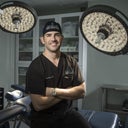Thank you for your question. You submitted some photos describing you’re 28-years-old, got Botox® 25 units in your frown lines, and 15 units for your forehead approximately 10 days prior. You’re asking why you can still frown so easily, and certain lines are still present.

